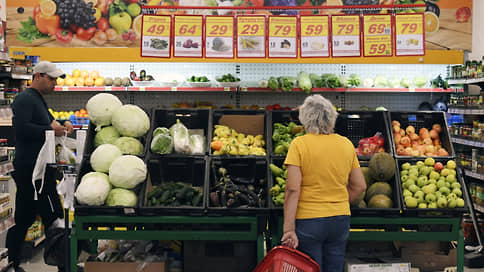Inflation data for October showed cooling of domestic demand
[ad_1]

November should be a key month for determining the effectiveness of the Bank of Russia’s decisions in monetary policy (MP). Central Bank data for October demonstrate that by the beginning of 2024, some cooling in domestic demand and lending activity is inevitable, but the impact of budget support for demand can only be assessed de facto. October inflation data also demonstrates that some cooling in demand has begun – but there are enough factors playing in favor of inflation, including one-off ones.
Rosstat data on inflation in October 2023 show that the cooling of domestic demand undertaken by the Bank of Russia in the form of raising the key rate to October 15% per annum is yielding the first results. The overall level of consumer inflation in October in year-on-year terms, according to Rosstat, was 6.69%. Rosstat, in its summary for the first week of November, also demonstrates a very high level of November inflation – 0.053% per day versus 0.012% in the same week a year ago and 0.027% on average per day in October 2023. However, in terms of its components, this inflation is almost exclusively food and is largely related to the problems of import logistics: the increase is ensured to a very large extent by a sharp increase in prices for tomatoes and poultry products, which are largely dependent on imports. In non-food components there is a decrease in growth rates, uncharacteristic for the fall, in a number of positions almost to zero; in services it is transport and tourism, the latter is “playing out” the August-September weakening of the ruble, however, in September services in foreign tourism fell significantly in price after a strong rise in the previous months.
The October bulletins of the Central Bank “Monetary conditions and the transmission mechanism of monetary policy” and “Review of risks of financial markets” at the end of last week demonstrated other signals of the effectiveness of the Central Bank’s decisions on monetary policy – over a longer horizon. The market, as the Bank of Russia believes, was expecting an increase in the key rate to 14% per annum, but not to 15%, and the tightening of lending conditions in November in all segments promises to be faster than in October. “The dynamics of the retail portfolio in October were influenced by a decrease in the issuance of consumer loans, and the issuance of mortgage loans remained close to the values of 2022 – the first half of 2023,” states the Central Bank, demonstrating its tactics: “On the supply side of loans, there is no reason to expect an increase in risk appetite in the banking sector against a slowdown in retail lending growth: the absence of overly optimistic expectations will fundamentally limit risk bias.” The boom in short-term deposits continues, which also influenced the dynamics of M2 and M2X (it decreased in October), “according to preliminary estimates, in October, due to the continuing reduction in the contribution of budget operations, the annual growth of M2 amounted to 19.8%, M2X – 15.0 %,” according to regulator analysts.
The question of how autumn-winter budget spending will affect inflation and inflation expectations seems to be truly key to the current situation. Let us recall that the reduction in the “contribution of operations” of the expanded, and not just the federal, budget, which the Central Bank mentions, is in fact the result not of limiting expenditures, but of their partial “movement” from the end of 2023, as is usually the case in the budget system, to the first half of the year . The adaptation of the economy to the new schedule of budget expenditures will determine the short-term inflationary environment – for several months. The current rate of 15% per annum has been de facto declared as the maximum by the Central Bank itself: if the budgetary actual contribution to the November inflation picture is stronger than expected, the Bank of Russia will apparently have to consider the option of an additional (and hardly symbolic) rate increase – the limit is At the same time, 15% clearly separates the possible “ordinary” and “emergency” level of rates with inflation of 6–7%.
[ad_2]
Source link






